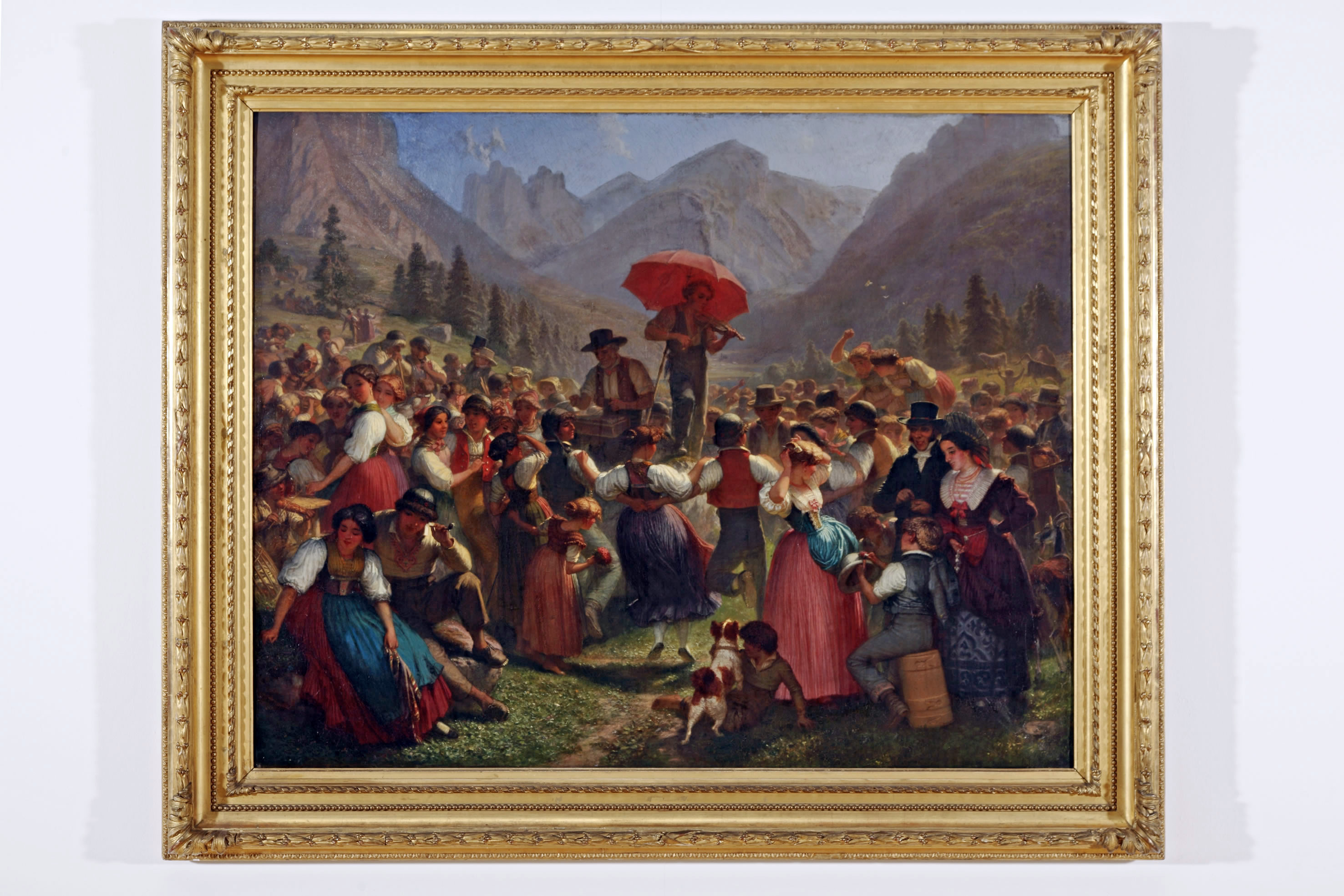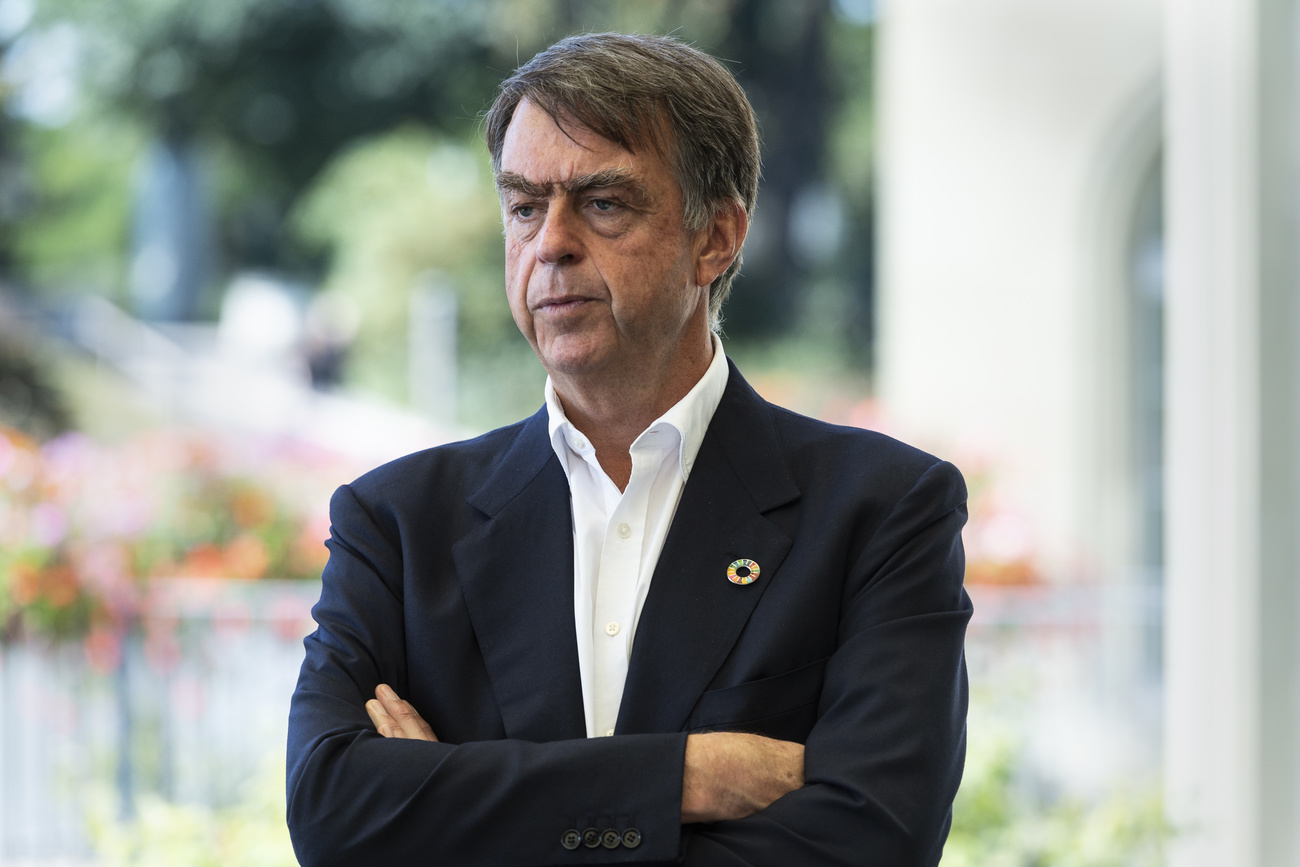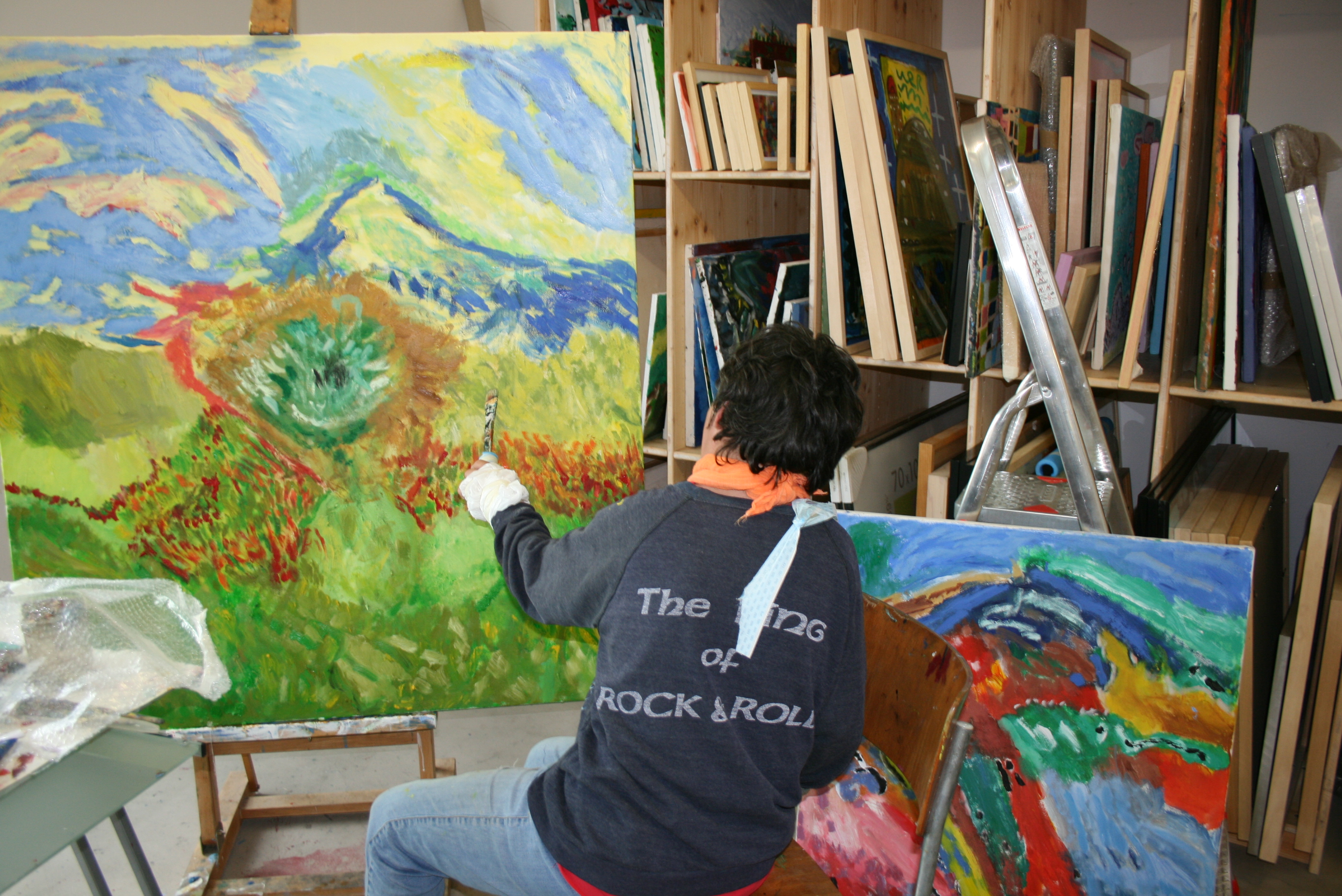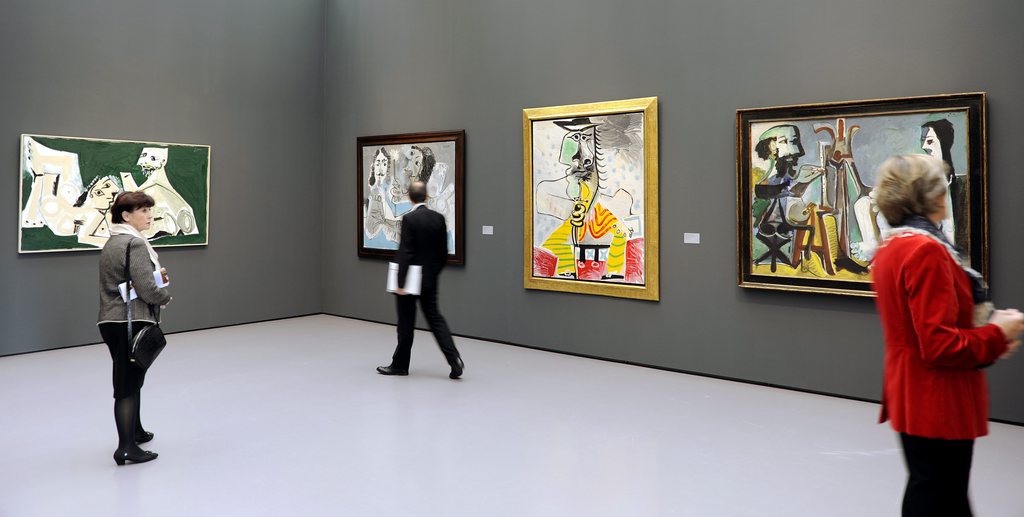Artists take a look over the rainbow

Inspired by the classic ballad “Over the Rainbow” sung by actress Judy Garland in the 1939 film The Wizard of Oz, St Gallen Art Museum is hosting an original exhibition looking at happiness and artistic creation.
“We all want to be happy and escape our daily routine. This is a common wish,” said Konrad Bitterli, co-curator of the exhibition.
“Happiness is a central part of human well-being, similar to the search for peace and serenity. At least this is what we are always being shown on TV and in romantic comedies. The exhibition explores this escapism from daily worries and routine.”
In the show, 19th-century works hang alongside contemporary pieces, looking at specific moments or events such as births, family gatherings, dances, or man’s relationship with nature.
It showcases work by leading Swiss artists such as Cuno Amiet, Ferdinand Hodler and Robert Zünd, as well as the German Impressionist Max Liebermann. These sit alongside contemporary work by Yael Bartana from Israel, Candice Breitz from South Africa, Felix Gonzalez-Torres from Cuba and Swiss artist Beat Streuli. Newcomers Georg Gatsas and Barbara Signer also stand out.
Change in presentation
In the 19th century, happiness was a much more popular artistic theme than at present.
“I don’t think we’ve changed much as human beings since then. The theme remains popular today as seen by the work of some of the newcomers on show here in St Gallen,” said Bitterli.
“What’s changed is the way it is presented. Yet whether it’s painting, video or photography, the motivation is often the same. Nonetheless, 19th-century paintings showing mothers with babies in floral countryside settings really had nothing to do with the harsh reality of life at that time.”
Is Switzerland more open to this kind of artistic idealism?
“I don’t think it’s anything specific to Switzerland although the picture-postcard images of cows and mountains have become part of our identity. Today the reality is that most Swiss live in urban environments,” said the curator.
What’s important is to look beyond what the paintings are showing, he added. The reality is that in many of the paintings hard work and hardships are hidden, especially those depicting 19th-century farming families.
“Over the Rainbow is all about escapism,” said Bitterli. “But like in the song, we all dream of an ideal place that only exists in children’s nursery rhymes.”
German romantic legacy
Happiness is one of the main areas of research of Bruno Frey – a professor of economics at Britain’s Warwick University.
“The ultimate goal of the economy is for people to be happy. The aim is not to produce goods and services but human happiness. The financial system only exists to ensure that the world functions better. Obviously this is not happening right now,” said Frey.
“I believe that above all happiness relates to humans and comes from our relations with friends, lovers or family members. This is something you can see in the works shown at St Gallen Art Museum.”
As to Swiss interest for natural and idyllic settings, Frey said this “was not specifically Swiss but rather originated in German naturalism. It’s a legacy from the Romantic period.”
“Only idiots can be happy”
“Intellectuals are not very comfortable with the idea of happiness,” said Frey. “They don’t like it. Artists seem to go to great lengths to suffer. This is something we owe, once again, to the romantic idea of the suffering artist.”
“There is a belief, especially in the Germanic world, that only unhappy people are productive and efficient,” said the economics professor, who teaches in London, Zurich and Friedrichshafen in Germany.
“But the reality is that artists are usually happier than most people as they do things they really enjoy. Nobody has ever been forced to become an artist.”
Frey concluded: “The French general Charles de Gaulle once said ‘only idiots can be happy’, which is a typically French way of looking at it. In the Anglo-Saxon world this idea is not so widespread. In fact happy people tend to be more creative than the miserable ones. But in my opinion artists are bipolar and go from one extreme to the other. Normal people are less unstable emotionally.”
The exhibition at St Gallen Art Museum comprises paintings, photographs and video installations which look at the themes of happiness and idyllic life over the centuries.
It features well-known Swiss artists such as Ferdinand Hodler and Robert Zund as well as Yael Bartana from Israel, Candice Breitz from South Africa, Felix Gonzalez-Torres from Cuba and newcomers Georg Gatsas and Barbara Signer.
The exhibition runs until October 28.
(Translated from Spanish by Simon Bradley)

In compliance with the JTI standards
More: SWI swissinfo.ch certified by the Journalism Trust Initiative














You can find an overview of ongoing debates with our journalists here . Please join us!
If you want to start a conversation about a topic raised in this article or want to report factual errors, email us at english@swissinfo.ch.